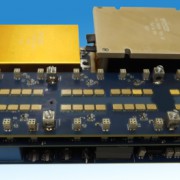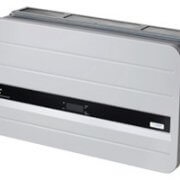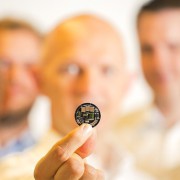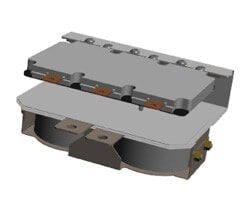FF Echelon: Faraday Future’s EV inverter
Faraday Future, the new Electric Vehicle start-up today announced to have developed and filed patents for high power density inverter. They claim to have increased power density by 20% to 30%.
The FF Echelon inverter patent is the first one to be approved and credited to Faraday Future: U.S. patent #9,241,428 B1
The Inverter was developed by the startup in-house engineering, and led by Senior Director of Electric Drive Silva Hiti.
“Condensing the number of transistors and other complex components enhances the inverter’s overall stability and dependability,” explained Silva Hiti, “allowing us to accomplish far more, with fewer materials.”
The official announcement states that FF team managed to minimize the number of components, both mechanical and electrical pieces, in order to achieve smaller size and higher reliability at the same time. They state that un-even sharing of current across electric components cause higher stress. An issue they solved by having less components to monitor and share current across.

This design and method is opposite to the one used by Tesla when they designed and manufactured the first versions model S. As showed and explained in an article we published, Tesla preferred to use proven technology in its inverter, even if the number of IGBTs was high. Tesla used TO-247 discrete packaging for their power semiconductor devices, and managed to monitor and track current in each of these components.
Most Hybrid car manufacturer prefer to use power modules. Toyota designs and manufacture its own power modules and integrates them in the inverter, when most competitors will use Infineon, Mitsubishi Electric, or Danfoss power modules especially designed for electric and hybrid cars.











Do we know what kind of technology they use for the transistors ? is it Silicon, SiC or even GaN /Si ?
Thank you for your question.
The patent talks about:
“an IGBT (insulated gate bipolar transistor), or other suitable element, for switching the direct current into an alternating current.”
So it’s not clear, but it may be more IGBTs for now. We will update the article if we gather more information about it.
https://www.ff.com/us/futuresight/The-Faraday-Future-Inverter/
They says it’s IGBT modules.